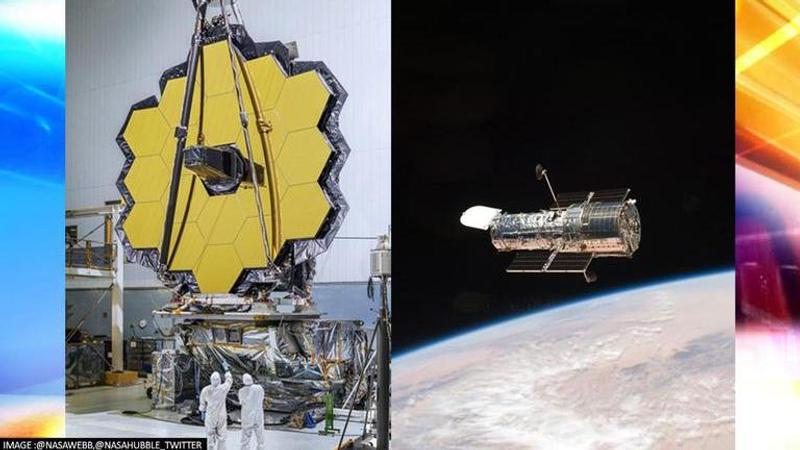Published 20:16 IST, December 12th 2021
James Webb Telescope is not a replacement but a successor of Hubble, says NASA
NASA said that the Webb telescope is not a “replacement” of Hubble but rather is a “successor” as the former will build on the decades of work of the latter.

Among several observatories installed in orbit, it is the James Webb Space Telescope that is being touted as a game-changer in space exploration. Set to be launched on December 22, Webb is the most powerful telescope ever built and is the biggest engineering marvel after the Hubble space telescope. The Hubble telescope, which was launched in 1990 is possibly nearing its retirement as it suffers technical glitches every now and then and runs on the technology of the past.
Here's what makes Webb a successor and not a replacement
Although Hubble has been up in orbit for 31 years, NASA has cleared the air concerning its fate. NASA said that the Webb telescope is not a “replacement” of Hubble but rather is a “successor” as the former will build on the decades of work done by the latter. “Webb often gets called the replacement for Hubble, but we prefer to call it a successor. After all, Webb is the scientific successor to Hubble, its science goals were motivated by results from Hubble”, NASA said in a report.
Further clarifying why the Hubble is not being replaced by the Webb telescope is because of their unidentical capabilities. Webb has been designed to study the universe using the infrared wavelengths of light whereas Hubble does the same by capturing optical and ultraviolet wavelengths, however, it also possesses some infrared capabilities too, as per NASA.
In addition to this, Webb will reveal new secrets of the universe from a time beyond what was peered by the Hubble telescope. According to NASA, Hubble has been able to detail the cosmos by peering as back as about 500 million years after the big bang, the occurred almost 14 billion years ago. Webb, on the other hand, will be able to visit in time even beyond those remaining 500 million years using its instruments that are extremely sensitive to infrared light. By the statement, the agency wants to convey that two of the biggest and greatest inventions for space explorations will work in tandem to answer the fundamental questions about the cosmos. The Webb telescope, which is the size of a tennis court, however, excels in other features such as it is half the weight of Hubble and has a significantly larger primary mirror.
Image: Twitter/@NASAWebb/@NASA_Hubble
Updated 20:16 IST, December 12th 2021




